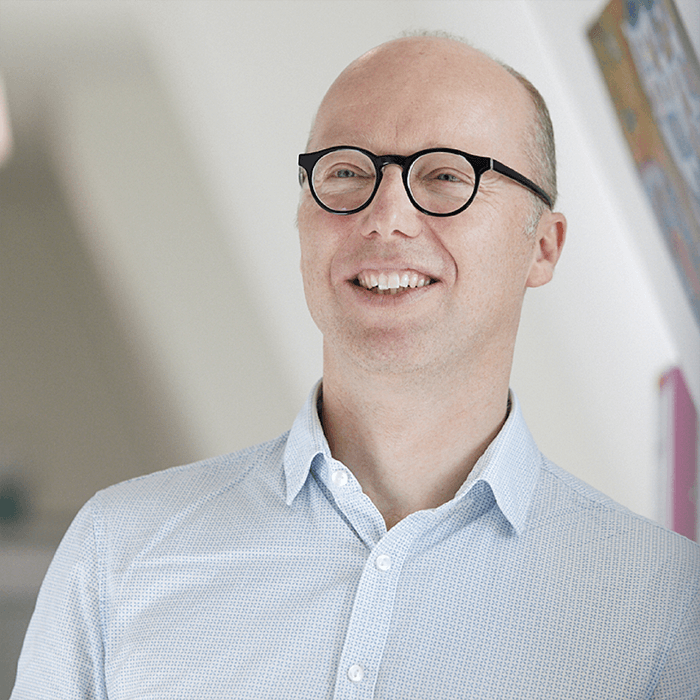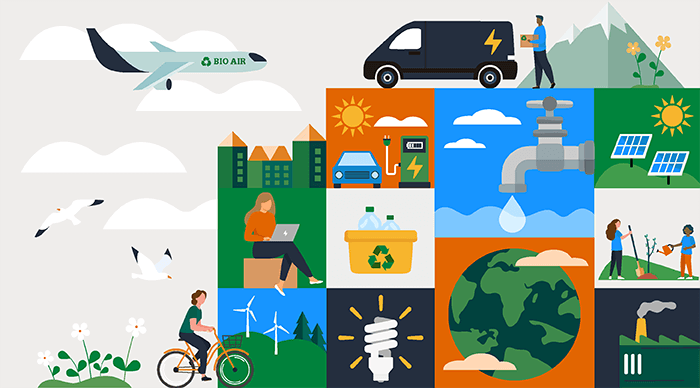
What led you to the idea of making the ESCRS Congress more sustainable?
I first became aware of the climate emergency and the need for pursuing sustainability quite a few years ago through my daughter who, like a lot of the younger generation, is enthusiastic and highly motivated about being more sustainable. Then, a couple of years before the COVID-19 pandemic, together with other ESCRS decision makers, I looked into the idea of making the Congress sustainable, and one of the things we considered was how much carbon we would need to offset for delegates’ flights. When the COVID-19 pandemic came, our focus naturally shifted, but now that things are quieting down again on that front, ESCRS is bringing sustainability back into focus with two goals in mind: the first is making the Congress more sustainable, and the second is incorporating sustainability into surgeons’ operating theaters.
Ahead of the upcoming 2022 Congress in Milan, Italy, we have sought the guidance of The Global Destination Sustainability Movement (GDS) to track, report on, and generally help with the project. We have a number of initiatives that we are looking to implement. All delegates will have the option of donating a few extra euros to offset their travel. We will have a relaxation lounge for people to engage in self-care. We’re encouraging our members to bring a reusable bottle and use the water fountains that will be located throughout the congress center to avoid the use of thousands of single-use plastic bottles that we would usually go through. We’re also looking to serve less meat. Any leftover food will be donated instead of thrown away. One of the most important factors will be our green partners, non-governmental organizations who will be able to offset the Congress’ carbon emissions, supporting projects that benefit the less fortunate. Milan is just the first step as we will be analyzing data throughout the conference and afterwards to see what we can do better for the 2023 Congress in Vienna, Austria, for which I have the goal of being carbon-neutral.
How far are you from a carbon-neutral Congress meeting?
Honestly, we will only know after Milan. Ideally, from a research perspective, we would analyze Milan to establish a baseline before we make any changes, to truly see what effect each of the initiatives has – and that was our original plan, but I feel like we don’t have the time to let another year pass before we take action; we have to act now. We also don’t have the scope to retroactively compare previous congresses as we weren’t monitoring all of the required data points. We did a review of the Paris Congress in 2019, looking at where all of the 9,500 delegates came from, but I am not sure how applicable the data will be to this year as some things will likely be different as a result of the COVID-19 pandemic. We are expecting fewer people coming from outside of Europe.
This analysis will still give us a good place to work and improve from, and GDS will be taking note of a lot of data points. They will be looking at the amount of electricity we use, the carpets used for soundproofing, which currently have to be thrown out afterwards, the industry partners and their booth setups, the amount of paper and the number of plastic bottles used. We will also be looking at the hotels, flights, and other elements, so we can get a holistic view to make plans for the next few years. After the conference, GDS will produce a report, and that’s when we’ll truly know how close we are to the goal of being carbon-neutral.
What is your approach to working with the industry to achieve sustainability?
The truth is that we won’t be able to reach the goal of being carbon-neutral as a Congress alone, it’s a combined effort. I know that industry is very aware of the topic of sustainability, and we’re really starting to see them get on board with it. Touching on our other goal of instigating sustainable changes in the OR, we have a lot of projects aimed at this. Currently, we use a lot of disposable instruments that end up as infectious waste, which is incinerated according to European guidelines. We’re looking at ways to make the production chain more sustainable and finding ways to measure and assess that. Medical waste makes up around 5 percent of the entire world’s waste, and as cataract surgery is the most commonly performed surgery, we’re likely a large contributor to that number.
Together with industry, we need to rethink the way we do things. First, we need to challenge the regulations put into place over the last 30–40 years that are restricting our ability to reduce waste, without reducing quality and hygiene or increasing the risk of infection. This will be a long process as we will need studies to prove safety and convince politicians and lawmakers. We also have shorter-term goals. One project that ESCRS will be leading together with EyeSustain is the development of a Sustainability Index for cataract packs. These packs are one of the major contributors to our waste, so we need to check how sustainable they are and how different packs compare. An index like this could be incorporated into tender processes, allowing clinicians and hospitals to factor sustainability into their decision-making process; something that would likely motivate companies into further investments into sustainability. It needs to become a part of doing business.
Are there any steps for working with the industry to increase sustainability that have already been implemented in Europe?
There’s a difference between the US and Europe when it comes to the regulatory systems. In the US, regulation stopped surgeons from reusing eye drops between patients. In Europe, that was never really an issue because we have always reused bottles. David Chang from ASCRS has been instrumental in getting sustainability projects and partnerships going with EyeSustain. He’s had a close connection to India and has really analyzed the way cataract surgery is performed at Aravind Hospital – with very low endophthalmitis rates, but using a lot of reusables. I think there are important questions we need to ask: how can we change the regulatory environment to allow us to work in a similar way to Aravind? The answers will differ between the US, Europe, and other continents, and between countries. It’s a big undertaking, but EyeSustain will help with that. It is a network where we can exchange ideas so that if somebody has already achieved one goal, we don’t have to reinvent the wheel.
I’m really looking forward to Milan, because we have planned internal meetings with industry at the Congress. We’ve planned an Innovation Day, a new symposium-style event where KOLs and industry representatives will meet to talk about new trends, and view presentations from startup companies. I’m really hopeful that we’ll have a very useful discussion on how we can move forward.
What steps have you already implemented in your practice or will do soon?
Austria is a small country, with nine million inhabitants and around 33 hospitals that do cataract surgery. This means that we all know each other, which makes it easier to analyze data. One thing we looked at was packaging of tools and consumables needed for cataract surgery. We sent samples to a company for analysis of the materials used and we found that there was a lot of variation between packages in terms of their size and components. We also noted that for each pack of four knives, only one or two were needed per surgery. Surgeons have different knife preferences, but this means that from every pack, at least two knives are thrown away without being used. As a result of this, we set a benchmark for the minimum accepted package needed for cataract surgery, which led to a reduction in carbon emissions of 25 percent.
Another thing we noticed was that we rarely recycled because we had no way to easily determine which plastics were okay to recycle and which were not, making the process a hassle. We do have a lot of ideas for improvement; one is to recycle the titanium within phaco tips by sending them to the supplier to melt and reform new tips, reducing the need to mine titanium. We need to look into the details of this, but some industry partners are very enthusiastic.
As ESCRS President, how do you avoid greenwashing?
We are aware of greenwashing and have definitely tried to avoid it. I can’t say that we are “green,” because we aren’t yet. We’ve set up a Green Group of 12 young ophthalmologists who will be coming up with many new ideas and making sure our steps are constructive and they make a real difference. The Sustainability Index will show us the true positive impact of our Congress changes.
I think when it comes to sustainability, everybody has to give something away, compromise. For us, it’s likely going to be convenience. Right now, I can just open a package and everything I need for cataract surgery, and more, is there – but this may need to change. For companies, it may mean selling fewer products. Individually, we also have a responsibility. We’re going to have to use less heating in the winter and less air conditioning in summer. Maybe we need to reduce our meat intake. We all need to sacrifice something for the greater good and I think the same will hold true for the cataract surgeon, for any eye care professional, for the industry, and for the patient.

